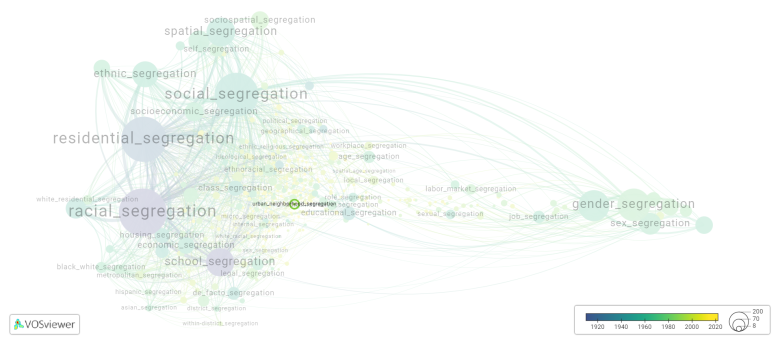Urban neighborhood segregation
Date and country of first publication[1]
1998
United States
Definition
Urban neighborhood segregation refers to the division of residential areas in cities along racial, ethnic, or socioeconomic lines. It refers to the concentration of certain racial or ethnic groups, often lower-income and minority populations, in specific neighborhoods, while other neighborhoods remain predominantly white and affluent.
This segregation can result from a variety of factors, including historical patterns of racial discrimination, discriminatory housing policies such as redlining, socioeconomic disparities, and personal preferences for living among people of the same racial or ethnic background. The consequences of urban neighborhood segregation can be far-reaching and have a profound impact on access to quality education, employment opportunities, healthcare, and public resources.
Segregated neighborhoods often lack necessary infrastructure and resources, such as quality schools, grocery stores, parks, and public transportation, leading to perpetuating cycles of poverty and inequality. Furthermore, segregated neighborhoods can foster social isolation and perpetuate stereotypes and prejudices.
Efforts to address urban neighborhood segregation often focus on promoting affordable housing, fair housing policies, and combating discriminatory practices in the real estate market. Additionally, urban planning initiatives that encourage mixed-income housing, inclusionary zoning, and community development can help promote more diverse and inclusive neighborhoods. This requires collaborative work between government agencies, community organizations, and residents to challenge and dismantle systems of segregation.
See also
Related segregation forms
Urban neighborhood segregation is frequently discussed in the literature with the following segregation forms:
racial segregation, north south segregation

This visualization is based on the study The Multidisciplinary Landscape of Segregation Research.
For the complete network of interrelated segregation forms, please refer to:
References
Notes
- ↑ Date and country of first publication as informed by the Scopus database (December 2023).
Urban neighborhood segregation appears in the following literature
Goldberg D.T. (1998). The new segregation. Race and Society, 1(1), 15-32. Elsevier BV.https://doi.org/10.1016/S1090-9524(99)80184-3
